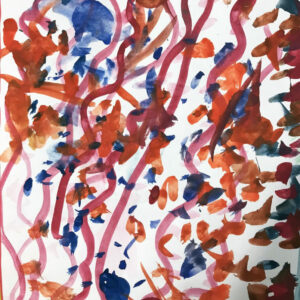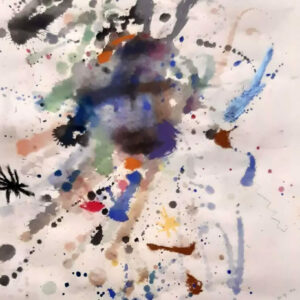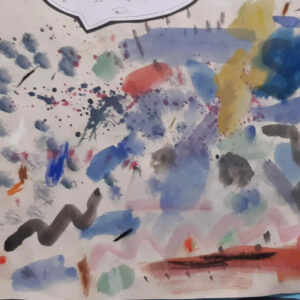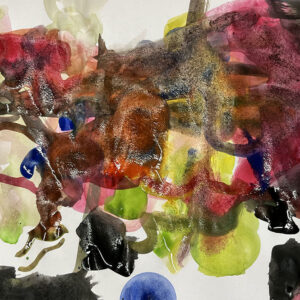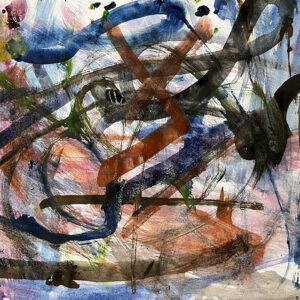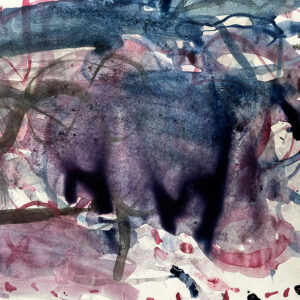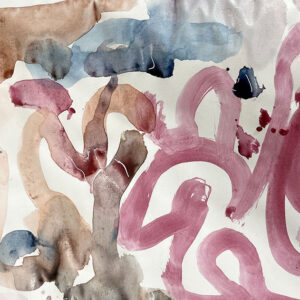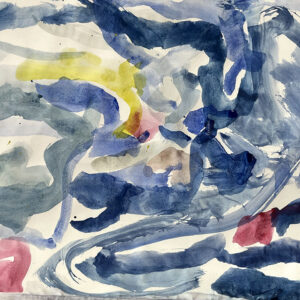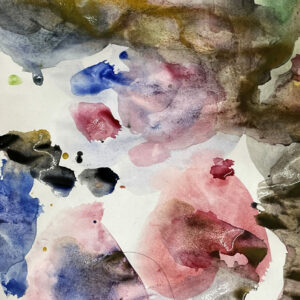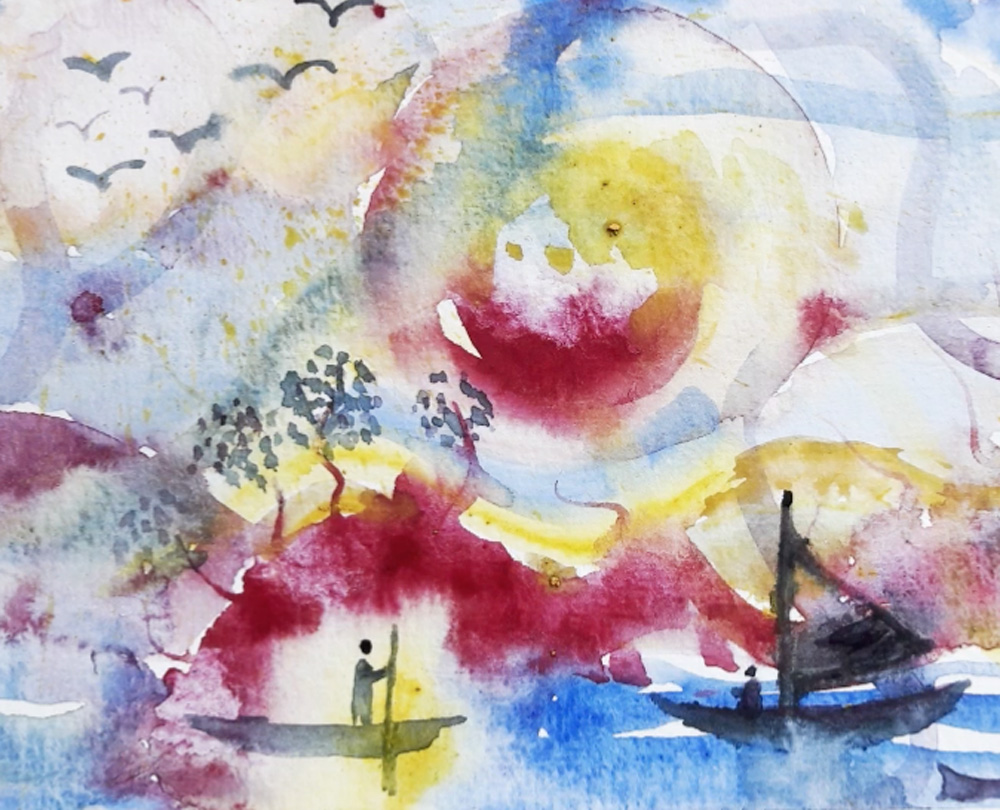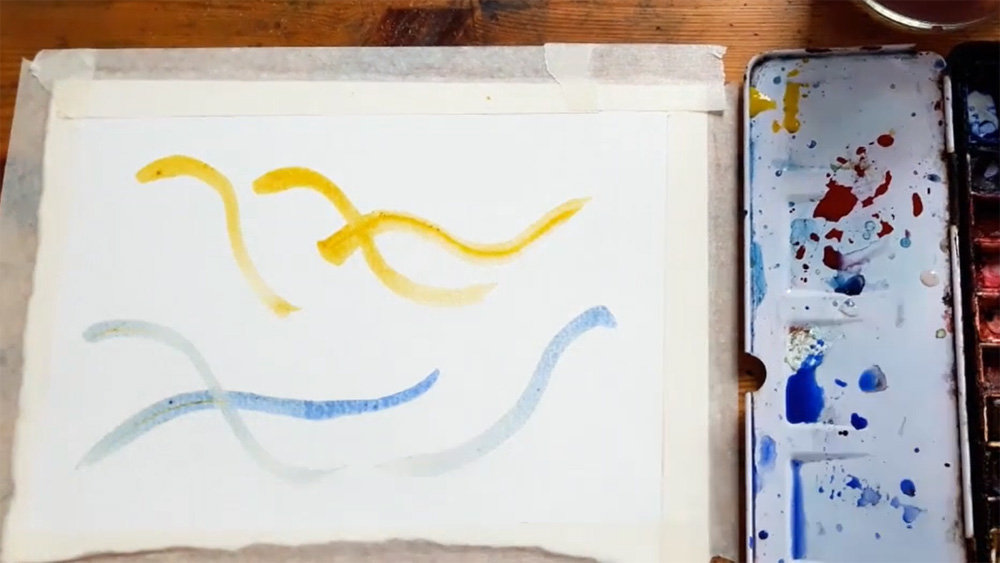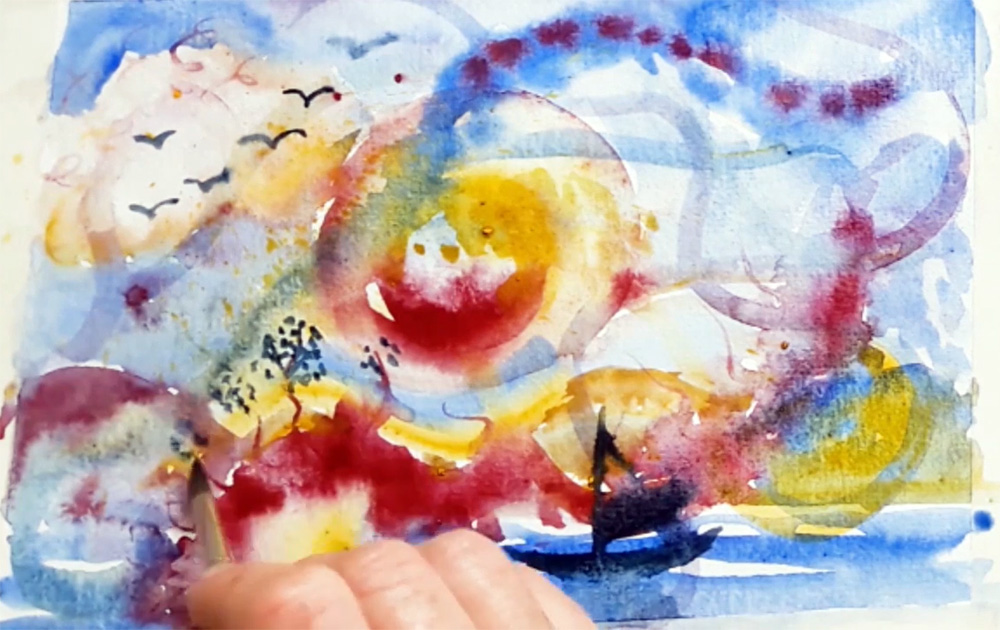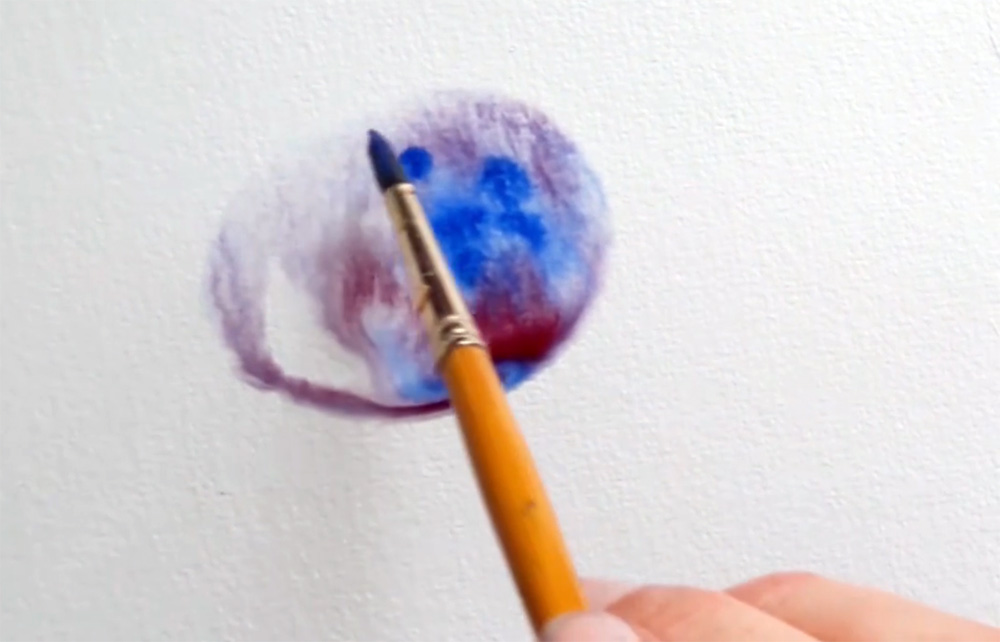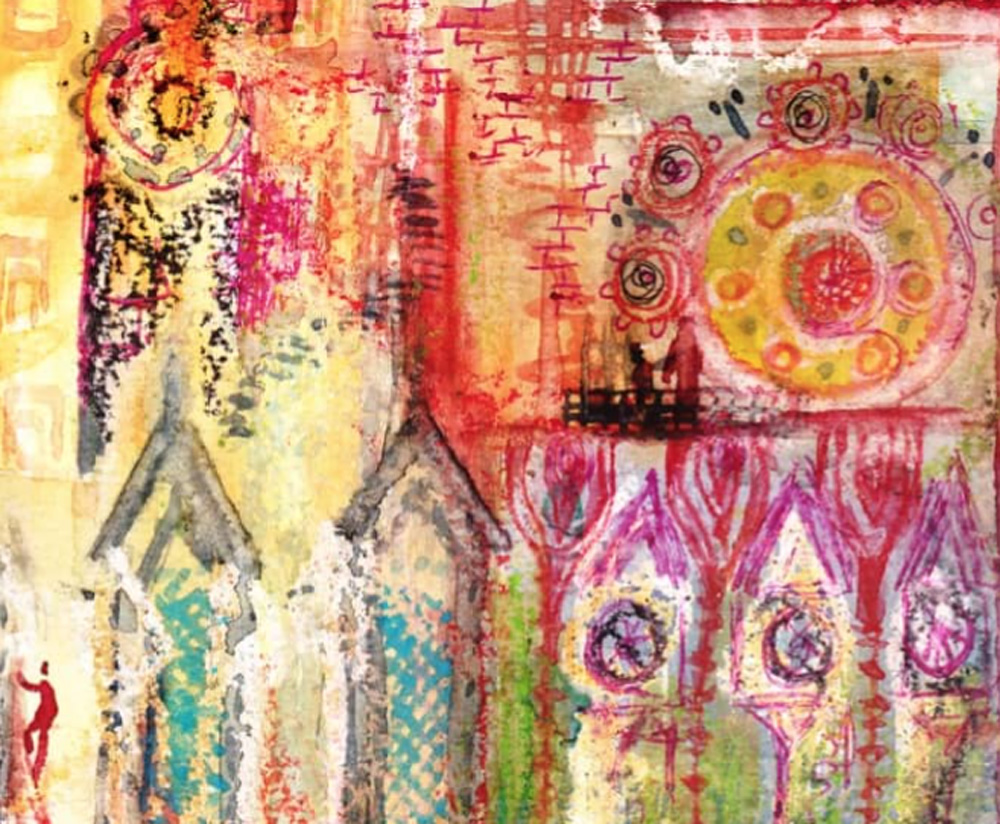DrawAble: Exploring Through Watercolour by Emma Burleigh Part Two
By Emma Burleigh
Emma is an artist, writer and teacher with a passion for watercolour and the way it links to mental and spiritual wellbeing. As part of the DrawAble series of resources for learning at home or school, Emma encourages young learners to use watercolour in a loose and intuitive way to help them discover the stories within their mark-making.
Notes for Teachers
What is the aim of this exercise?
This resource encourages children and teenagers to paint intuitively and mindfully. The activity encourages developing new ways of looking at watercolour, and observe the stories that emerge from painting.
What age can this exercise be used with?
This resource is suitable for participants aged 6+ and can be easily adapted for older children, teenagers or even adults.
How long does this exercise take?
This exercise will take between 30 minutes and 2 hours. Children may become engrossed in the activity and continue experimenting to create more complex paintings.
How do I measure success?
Success will be measured by the children’s engagement and interest, and their ability to link paintings with stories/narratives.
More able or engaged children may become more adventurous with the way they use watercolour; they may produce a variety of lines and make their paintings more detailed.
Encourage children to look at their paintings from different angles. Help them ask questions about their paintings, and support decision-making about which stories they would like to emerge from their paintings.
What can I try after this exercise
Move on to Part Three of this project
Exploring Watercolour at the Fitzwilliam Museum: an introduction to watercolour and exploring watercolour in the studio
Painting the Storm at Bourne Primary Academy is a weather-inspired exploration of watercolour and graphite
Try other DrawAble exercises and projects.
Which artists might we look at?
You may want to look at classic and contemporary painters:
J.M.W.Turner – sketchbooks, drawings and watercolours
Talking Points: Paul Cézanne
The dream like pictures of Marc Chagall
Emma Larsson takes inspiration from nature for her organic forms
You may also want to look at Emma’s other art and projects.
Introduction
Hi there, I’m Emma, a watercolour artist. One of my favourite ways to create art is to paint with no particular plan in mind. I like just letting the watercolour do its own thing. Often it does things that are much more interesting than I could have thought up by myself. So sometimes I just begin a painting with a feeling, then I choose colours that feel right for that feeling and just play.
Choosing colours for your painting
I wonder what colours you feel like using today? See if you can find two or three colours you particularly feel like choosing right now.
Have you chosen? Good! I’ve chosen red, blue, and yellow.
Now I’m going to play with these colours and see if a picture starts to emerge. I don’t know what that picture is going to be – that’s what makes it all so fun and exciting! I’ll begin by just painting some stripes onto the paper.
The “wet in wet” technique
Now, I feel like working wetter. So I’m going to use my favourite technique, which is called “wet in wet”.
First of all, I make the paper wet, using just water. I paint a wet shape on a part of the paper. I get some paint on my brush and I touch for wet paper with the brush. See how it spreads. I could add more colours in there now. What happens if I add two or even three colours into one wet area?
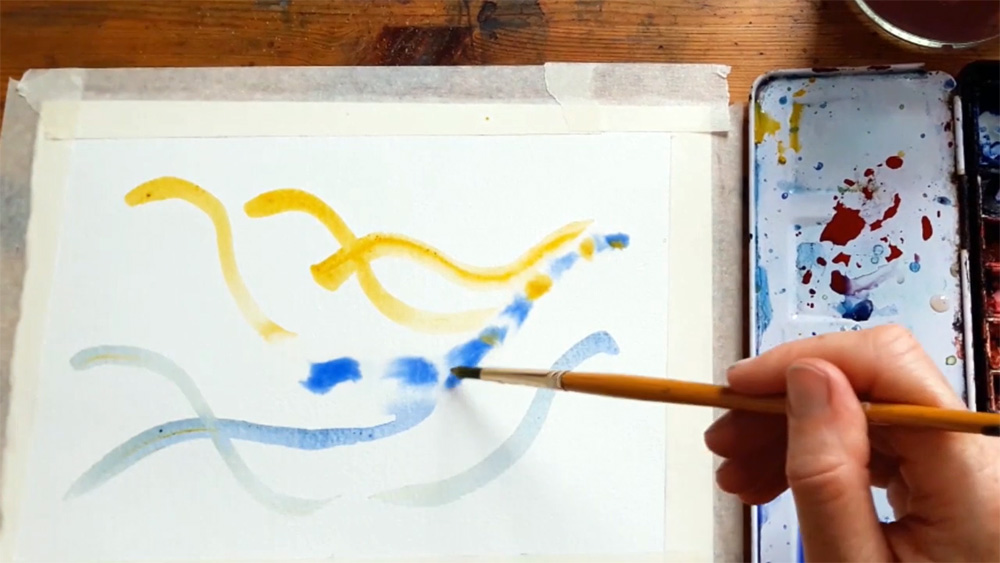 I can explore what happens if I move the paint around a bit, I can pick up my paper and let it run in one direction. The one thing I’m not doing is brushing the paint around, because then I might lose all these lovely effects that are happening. Now, I might feel like adding some splatters, or using the wrong end of my paintbrush to make some skinny lines.
I can explore what happens if I move the paint around a bit, I can pick up my paper and let it run in one direction. The one thing I’m not doing is brushing the paint around, because then I might lose all these lovely effects that are happening. Now, I might feel like adding some splatters, or using the wrong end of my paintbrush to make some skinny lines.
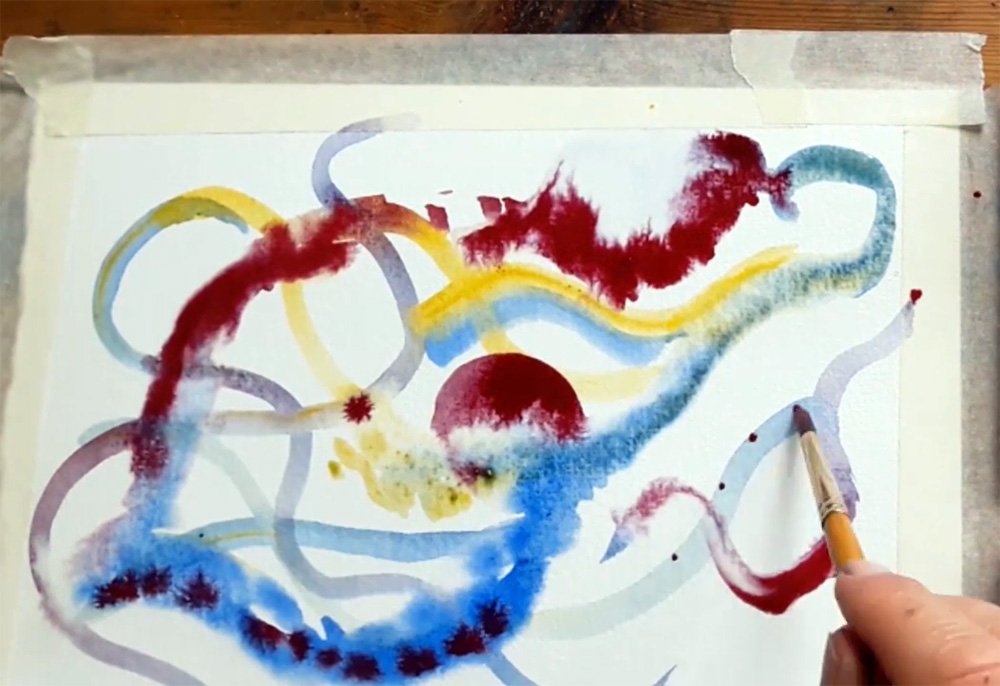
Finally, I’m going to use a piece of kitchen roll to blot up a few areas – either because they’re very wet or just because I feel like making them lighter. You try it too!
Now we need to let the paint dry. That might take a few minutes or half an hour. It depends where you live and whether it’s a hot, dry day or a wet, damp day. If you want to speed things up a bit, you could use a hairdryer, just dry the painting as if you were drying your hair.
Seeing a story in your painting
Is your painting dry? Good! Now we’re going to see if any picture is emerging. This is how I make quite a lot of my paintings. I start by just playing and exploring. And then when it’s drained, I decide what it is. Try looking at your painting upside down and from different sides. And just see if you start to see anything. Do you see a face or a person, or an animal, or a monster, or a flower, or a lake, or a castle, or a robot, or something else?
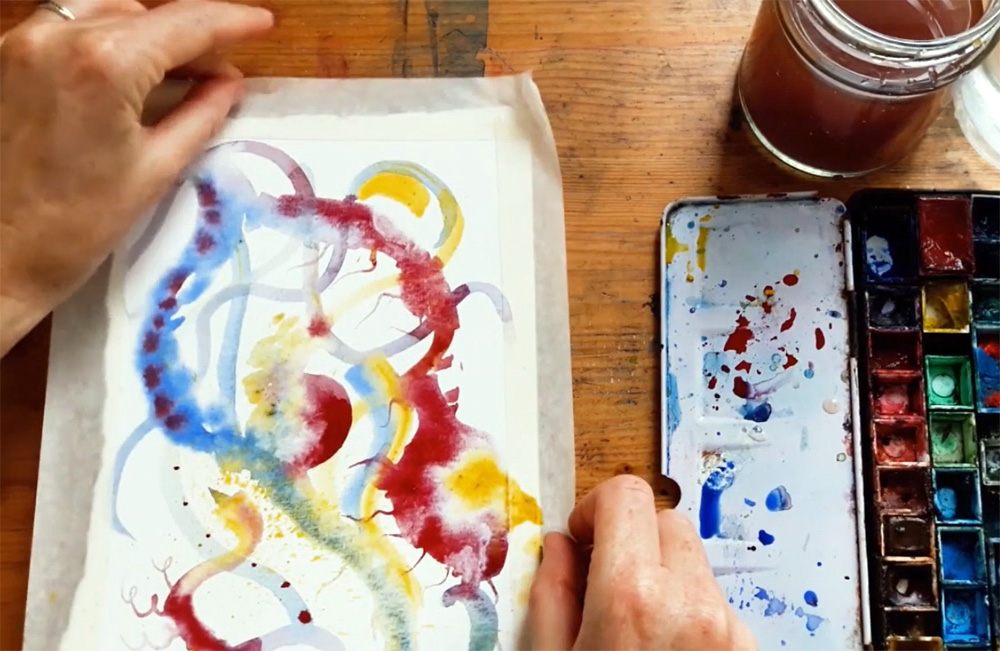
If you do see something, you could use some watercolour to pick out what you see. Make sure there’s not too much water on your brush and don’t make the paper wet this time, because you’re trying to be more detailed. You need to use the paint more crisply. Use a small brush. If you’ve got one, and see if he can add a few lines or shapes to make it clearer to everybody else what it is that you’re seeing in the painting.
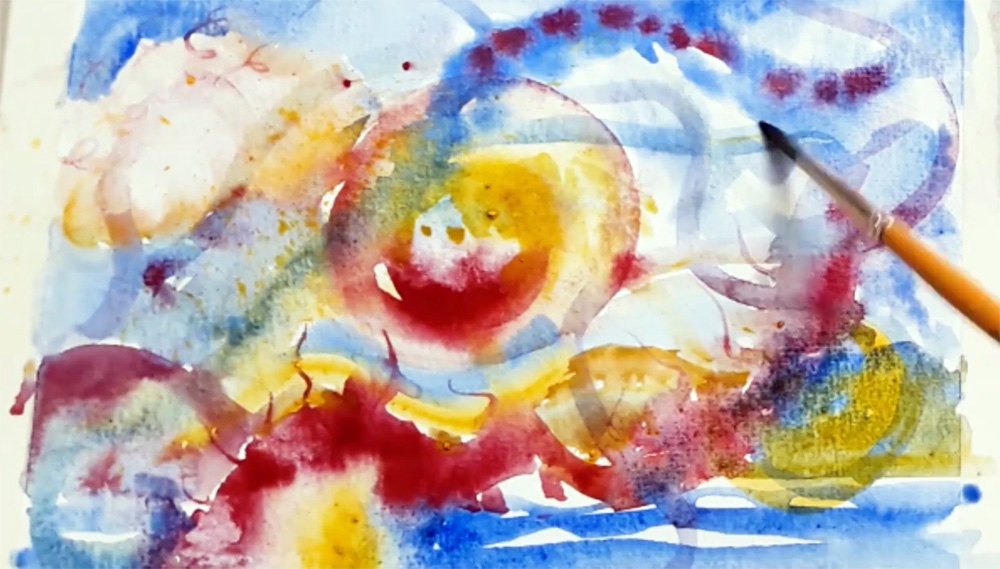 It can also be interesting to ask yourself: what’s the mood or the atmosphere of this painting? Has it got a stormy feel, or is it peaceful? Does it feel sad or funny? What’s the feeling? Maybe if you don’t see anything in particular, you could keep your painting abstract. But if, for example, you see a stormy sea, perhaps you could put a little boat in the waves to enhance that sense of storminess.
It can also be interesting to ask yourself: what’s the mood or the atmosphere of this painting? Has it got a stormy feel, or is it peaceful? Does it feel sad or funny? What’s the feeling? Maybe if you don’t see anything in particular, you could keep your painting abstract. But if, for example, you see a stormy sea, perhaps you could put a little boat in the waves to enhance that sense of storminess.

Have a go at creating your own painting – and see what stories emerge from it!
This is a sample of a resource created by UK Charity AccessArt. We have over 1500 resources to help develop and inspire your creative thinking, practice and teaching.
AccessArt welcomes artists, educators, teachers and parents both in the UK and overseas.
We believe everyone has the right to be creative and by working together and sharing ideas we can enable everyone to reach their creative potential.
See This Resource Used In Schools...
